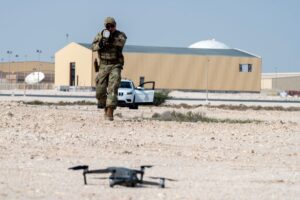
The Senate Armed Services Committee (SASC) wants the Pentagon to lay out a counter unmanned aircraft systems (UAS) strategy and to establish a counter UAS (c-UAS) task force. SASC would mandate the Pentagon develop a strategy "for countering drone technologies, referring drone offenses for investigation and prosecution, and assessing resources or authorities necessary for drone incursion response," according to a summary of the committee's version of the fiscal 2025 defense authorization bill. The Senate defense authorizers also advise the DoD…














